new posts in all blogs
Viewing: Blog Posts Tagged with: medical history, Most Recent at Top [Help]
Results 1 - 7 of 7
How to use this Page
You are viewing the most recent posts tagged with the words: medical history in the JacketFlap blog reader. What is a tag? Think of a tag as a keyword or category label. Tags can both help you find posts on JacketFlap.com as well as provide an easy way for you to "remember" and classify posts for later recall. Try adding a tag yourself by clicking "Add a tag" below a post's header. Scroll down through the list of Recent Posts in the left column and click on a post title that sounds interesting. You can view all posts from a specific blog by clicking the Blog name in the right column, or you can click a 'More Posts from this Blog' link in any individual post.

By: Amelia Carruthers,
on 2/5/2016
Blog:
OUPblog
(
Login to Add to MyJacketFlap)
JacketFlap tags:
Science & Medicine,
Health & Medicine,
dialysis,
Kidney disease,
medical history,
Books,
Crafoord Foundation,
David Goldsmith,
Dialysis Machine,
Fourth Edition,
Gambro,
Nils Alwall,
Oxford Textbook of Clinical Nephrology,
Willem Kolff,
WWII,
Technology,
hospital,
machine,
Sweden,
surgery,
discovery,
World War Two,
*Featured,
Add a tag
During the night, between 3rd and 4th September 1946, things were stirring in the basement of the internal medicine department, at the university hospital of Lund, Southern Sweden. A 47-year-old man had been admitted for treatment. His main problem was uraemia (urea in the blood), but he was also suffering from silicosis (a lung disorder), complicated by pneumonia.
The post Nils Alwall: The quiet, unassuming Swede appeared first on OUPblog.

By: JulieF,
on 12/17/2015
Blog:
OUPblog
(
Login to Add to MyJacketFlap)
JacketFlap tags:
tuberculosis,
Simon Bolivar,
medical history,
Diagnosing Giants,
Philip A. Mackowiak,
Solving the Medical Mysteries of Thirteen Patients Who Changed the World,
Simón Bolívar cause of death,
Simón Bolívar death anniversary,
Hugo Chávez,
arsenic intoxication,
Books,
History,
This Day in History,
Latin America,
DNA,
TB,
arsenic,
*Featured,
Science & Medicine,
Health & Medicine,
Add a tag
When Simón Bolívar died on this day 185 years ago, tuberculosis was thought to have been the disease that killed him. An autopsy showing tubercles of different sizes in his lungs seemed to confirm the diagnosis, though neither microscopic examination nor bacterial cultures of his tissues were performed.
The post Will we ever know for certain what killed Simón Bolívar? appeared first on OUPblog.

By: JulieF,
on 4/18/2015
Blog:
OUPblog
(
Login to Add to MyJacketFlap)
JacketFlap tags:
Chagas disease,
cyclic vomiting syndrome,
gastric flatus,
generalized arteriosclerosis,
Books,
History,
This Day in History,
Charles Darwin,
*Featured,
Science & Medicine,
Health & Medicine,
medical history,
Diagnosing Giants,
Philip A. Mackowiak,
Add a tag
When Charles Darwin died at age 73 on this day 133 years ago, his physicians decided that he had succumbed to “degeneration of the heart and greater vessels,” a disorder we now call “generalized arteriosclerosis.” Few would argue with this diagnosis, given Darwin’s failing memory, and his recurrent episodes of “swimming of the head,” “pain in the heart”, and “irregular pulse” during the decade or so before he died.
The post Darwin’s “gastric flatus” appeared first on OUPblog.

By: Bridget Stokes,
on 4/12/2015
Blog:
OUPblog
(
Login to Add to MyJacketFlap)
JacketFlap tags:
polio,
*Featured,
Science & Medicine,
Health & Medicine,
Jonas Salk,
poliomyelitis,
Salk vaccine,
medical history,
Albert Sabin,
Charlotte DeCroes Jacobs,
polio vaccinations,
Books,
Biography,
March of Dimes,
Add a tag
Today, 12 April 2015 marks the sixtieth anniversary of the announcement that Jonas Salk’s vaccine could prevent poliomyelitis. We asked Charlotte Jacobs, author of Jonas Salk: A Life, a few questions about this event.
The post Jonas Salk and the polio vaccination appeared first on OUPblog.

By: Joe Couling,
on 4/10/2015
Blog:
OUPblog
(
Login to Add to MyJacketFlap)
JacketFlap tags:
epidemiology,
vaccine,
Timelines,
polio,
Science & Medicine,
Health & Medicine,
Online products,
Oxford Medicine Online,
medical history,
polimyelitis,
polio history,
poliovirus,
public health,
WHO,
Add a tag
Today is the 60th anniversary of the polio vaccine being declared safe to use. The poliovirus was a major health concern for much of the twentieth century, but in the last sixty years huge gains have been made that have almost resulted in its complete eradication. The condition polio is caused by a human enterovirus called the poliovirus.
The post An interactive timeline of the history of polio appeared first on OUPblog.

By: Julia Callaway,
on 1/23/2015
Blog:
OUPblog
(
Login to Add to MyJacketFlap)
JacketFlap tags:
*Featured,
Images & Slideshows,
Health & Medicine,
Online products,
Oxford Medicine Online,
medical history,
anaesthesiology,
anesthesiology,
History,
Multimedia,
history of medicine,
Oxford Reference,
Add a tag
The field of anaesthesia is a subtle discipline, when properly applied the patient falls gently asleep, miraculously waking-up with one less kidney or even a whole new nose. Today, anaesthesiologists have perfected measuring the depth and risk of anaesthesia, but these breakthroughs were hard-won. The history of anaesthesia is resplendent with pus and cadavers, each new development moved one step closer to the art of the modern anaesthesiologist, who can send you to oblivion and float you safely back. This timeline marks some of the most macabre and downright bizarre events in its long history.
Heading image: Junker-type inhaler for anaesthesia, London, England, 1867-1 Wellcome L0058160. Wellcome Library, London. CC BY 4.0 via Wikimedia Commons.
The post An interactive timeline of the history of anaesthesia appeared first on OUPblog.


By: PennyF,
on 9/4/2014
Blog:
OUPblog
(
Login to Add to MyJacketFlap)
JacketFlap tags:
*Featured,
Images & Slideshows,
Science & Medicine,
Health & Medicine,
pain management,
Joanna Bourke,
cholic,
gout,
history of pain,
images of pain treatment,
medical history,
The Story of Pain,
History,
Medical Mondays,
Multimedia,
Add a tag
Pain is a universal experience. Throughout time, everyone knows what it feels like to be in pain — whether it’s a scraped knee, toothache, migraine, or heart attack. Although the feeling of pain may remain the same, the ways in which it was described, treated, and interpreted in the 18th and 19th centuries varies greatly from the ways we regard pain today. The below slideshow of images from The Story of Pain: From Prayer to Painkillers by Joanna Burke will take you on a journey of pain through time.
-
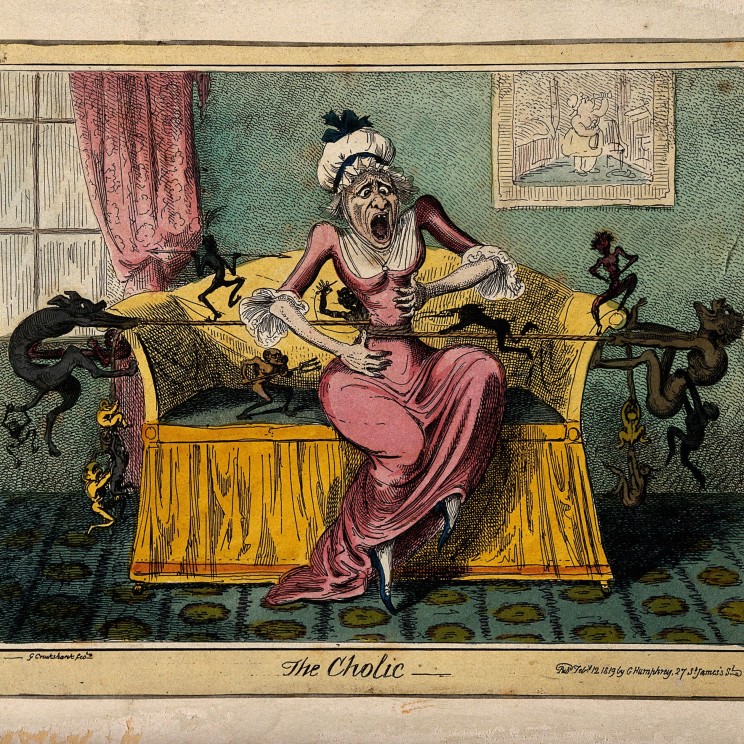
The Cholic
She feels like her waist is being constrained by a rope that is being tightened to an unbearable extent by demons. Other devils prod her with spears and pitchforks. The painting on the wall behind her shows a woman over-indulging in alcohol. Coloured etching by George Cruikshank, after Captain Frederick Maryyat, 1819, in the Wellcome Collection, V0010874. Figure 3.2 Page 64.
-

Administration of nitrous oxide
The administration of nitrous oxide and ether by means of the wide-bore modification of Clover’s ether inhaler and nitrous oxide stopcock, from Frederic W. Hewitt, Anaesthetics and their Administration (London: Macmillan & Co., 1912), 583, in the Wellcome Collection, M0009691. Figure 9.3 Page 283.
-
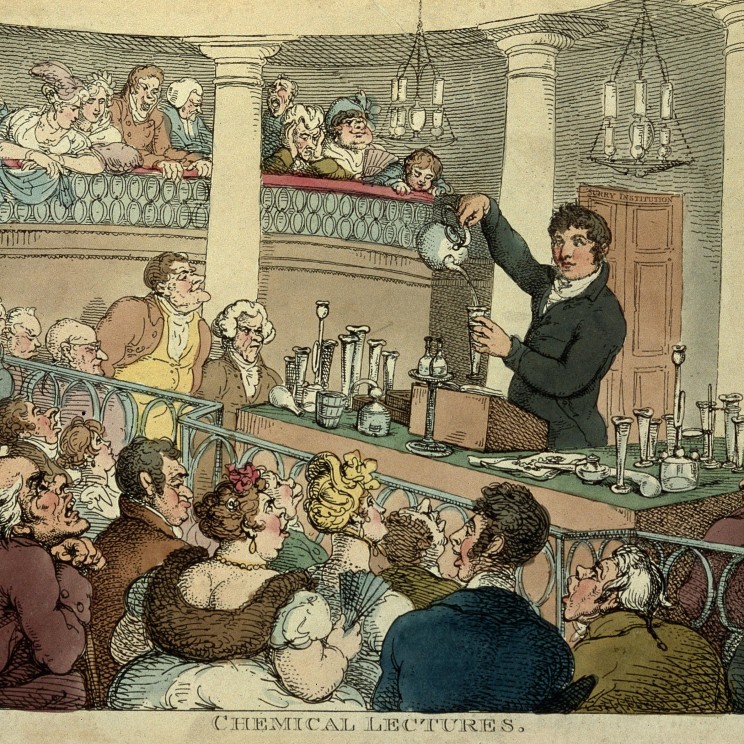
Chemical Lecture
Thomas Rowlandson, “A chemical lecture by Humphrey Davy at the Surrey Institute”, colour etching, 1809, in the Wellcome Collection, L0006722. Figure 9.1 Page 274.
-
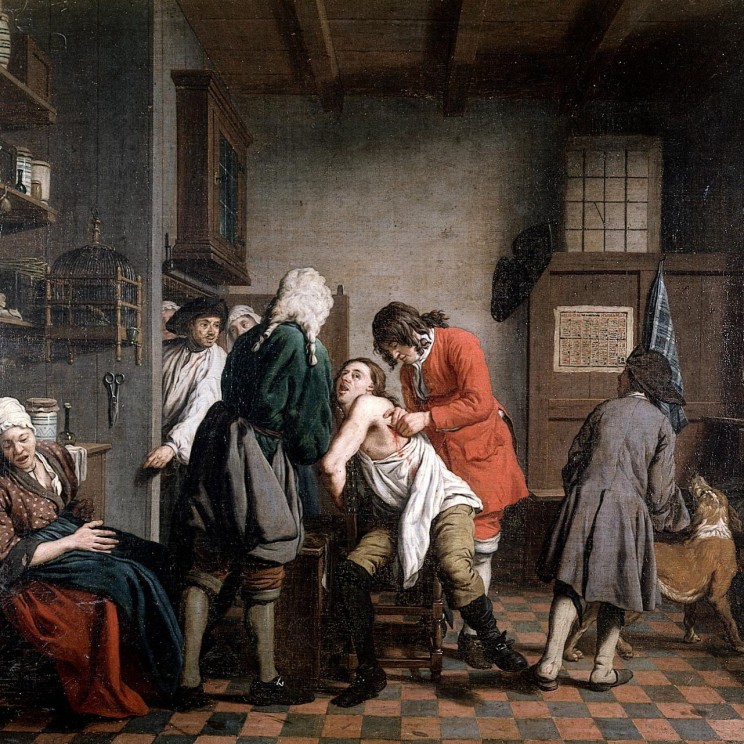
Surgeon attending to a wound
Oil painting by Johan Joseph Horemans of an interior with surgeon attending to a wound in a man’s side, 18th cent., in the Wellcome Collection, L0010649. Figure 8.2 Page 234.
-

William Osler at bedside of patients
1925, from William Cushing, The Life of Sir William Osler (Oxford: Clarendon Press, 1925), 552, in the Wellcome Collection, L0004900. Figure 8.4. Page 259.
-
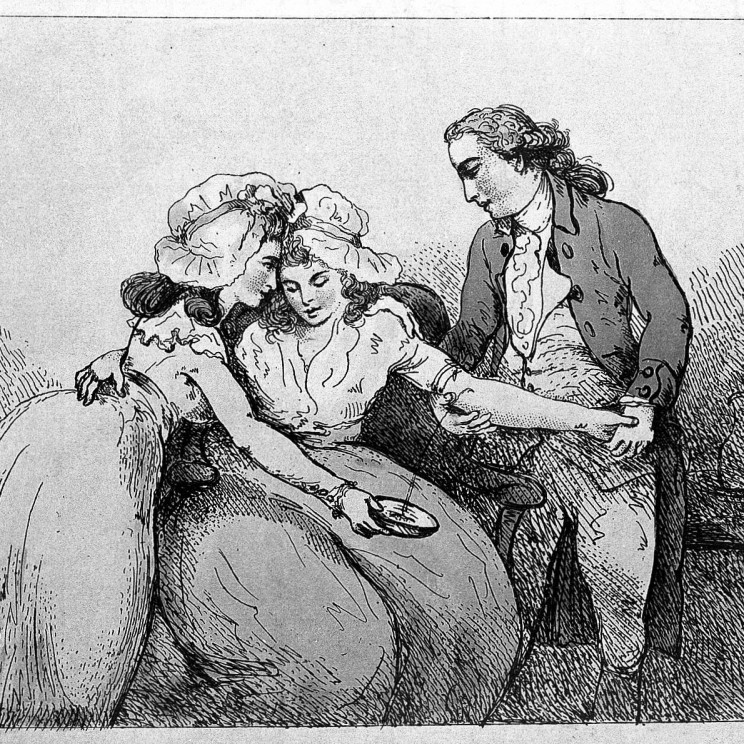
The process of bleeding
A surgeon bleeding the arm of a young woman, as she is comforted by another woman. Coloured etching by Thomas Rowlandson, c. 1784, in the Wellcome Collection, L0005745. Figure 8.1, Page 233.
-
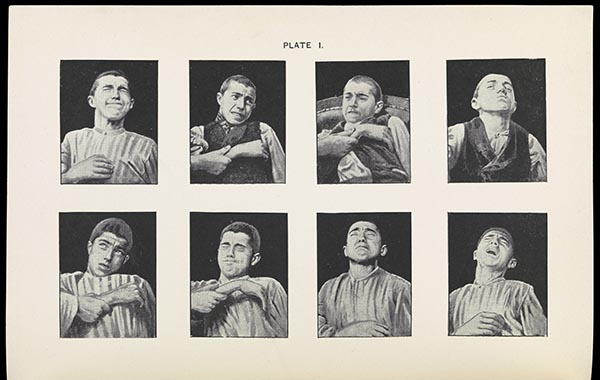
The Physiognomy of Pain
Fear (1896), trans. E. Lough and F. Kiesow (New York: Longmans, Green, and Co., 1896), 202, in the Wellcome Collection, L0072188. Figure 6.3 Page 171.
-

The Morning Prayer
Advertisement card of Dr Jayne’s Tonic, Vermifuge, Carminative Balsam, and Sanative Pills. R. Epp. c 1890s, in the Welcome Collection, L0041194 Figure 4.3. Page 116.
-

Origin of Gout
Gout (caused by excessive alcohol consumption) is portrayed as a burning pain, inflicted by a demon with red-hot pincers. The blackbird is a harbinger of worse to come. Coloured etching after Henry William Bunbury, c. 1780s-1800, in the Wellcome Collection, V0010848. Figure 3.3 Page 66.
Featured image credit: The unconscious man is nothing more than a passive on which little demons equipped with surgical instruments can operate. “The Effect of Chloroform on the Human Body”, watercolour by Richard Tennant Cooper, c. 1912, in the Wellcome Collection, V0017053. Used with permission.
The post The story of pain in pictures appeared first on OUPblog.












